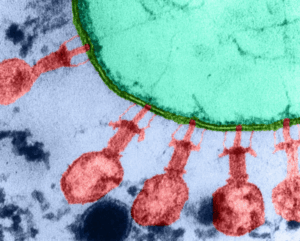How herd immunity ended the greatest pandemic in the twentieth century.
The Spanish Flu of 1918 is widely known as one of the deadliest pandemics in history. Contrary to what its name suggests, it was first detected in various parts of Europe, the United States, and Asia before spreading to the rest of the world, infecting about one-third of the world population at the time (around 500 million people), and killing between 20 million and 50 million people (2). The first wave of the disease struck in the Spring of 1918, and two more waves returned in the fall of the same year and in the spring of 1919. In particular, the second wave was by far the most deadly of the 3 waves due to several simultaneous pneumonia outbreaks (5). The virus spread in the midst of World War I, and the movement of troops from country to country largely contributed to its international reach (5). While preventative measures were taken to help combat the spread of the virus, (protective masks, the shutting down of businesses and schools, etc) (2), vaccines and drugs that could effectively treat it had not been developed yet, and the flu ravaged the world before declining and coming to an end in the summer of 1919 (2).

The Spanish Flu pandemic presumably concluded because those who had been exposed to it either had died from the disease or had developed antibodies and become immune to it (4). Once the spread of the virus subsided, a sufficient number of people had developed immunity to provide enough protection against those who had not yet come in contact with the virus. This phenomenon of the immune protecting the unexposed is known as herd immunity.
To understand the concept of herd immunity, it is necessary to discuss the reproduction number of a contagion or R0 (R-naught). This mathematical term indicates how contagious a disease is as it spreads from person to person. Specifically, R0 refers to the average number of people that contract an infectious disease from one person. For example, if a disease has an R0 value of six, then on average one person will transmit the disease to six other people (6). However, R0 is only applicable when there is no prior immunity or vaccines within the population in which the disease is spreading.
If R0 is 1, then one person will only transmit the disease to one other person. Thus, if the value of R0 is 1, the disease will not increase by an exponential factor and cause an epidemic, which would occur if R0 is greater than one. If the R0 value is less than one, the contagion will not be able to survive and will eventually die out completely.
Even if the reproduction value is at a value above 1, it is still possible for the spreading of a disease to decline via herd immunity (3). If a large enough proportion of a population becomes immune, it can, in a way, “cancel out” the R0 value at which the sickness is spreading. Using the previous example of R0 being six, if five-sixths of a population has already developed immunity to a disease, then an infected person can only give the disease to the one person out of those six that is not immune. Consequently, the disease would no longer pose the risk of becoming an epidemic because it would not spread at an exponential rate (3).
In the case of the Spanish Flu, epidemiologists calculated the R0 to be between 1.4 and 2.8 (1). Based solely on the idea that about one-third of the global population was infected with the disease, the reproduction number would have to have been about 1.5 in order to drive the reproduction number down to one. A reproduction number of 1.5 means that one person will infect one and a half people or two people will infect an average of three people. So, if one-third of the population is immune, then out of the three people that the two people infected, one of them will be immune. As a result, the two people with the Spanish flu would only pass it on to two other people. In other words, one person would spread the disease to one other person, making R0 one. Thus, the fact that the disease diminished once one-third of the population was exposed lines up with the reproduction number of the Spanish flu. This information demonstrates that herd immunity is what likely ended the Spanish Flu of 1918.
The same concept can be applied to COVID-19, where R0 is estimated to be about three (3). To end the coronavirus pandemic, around two-thirds of the world population must be immune. Fortunately, in the modern world, there is a better way of attaining herd immunity. Unlike the time the Spanish flu struck, scientists are now able to develop vaccines to increase the proportion of immune people. Thus, instead of needing two-thirds of the entire world to be exposed to the coronavirus, we can achieve herd immunity through the safe use of vaccination and have far fewer people contract COVID-19.
– Anji Friedbauer
References
- “Expert Comments about Herd Immunity.” Science Media Centre, 13 Mar. 2020, www.sciencemediacentre.org/expert-comments-about-herd-immunity/.
- History.com Editors. “Spanish Flu.” History.com, A&E Television Networks, 12 Oct. 2010, www.history.com/topics/world-war-i/1918-flu-pandemic.
- Howe, Jeff. “There’s Only One Way This Ends: Herd Immunity.” Boston Globe, 12 Apr. 2020.
- Matthews, Dylan. “Why We Should Be Careful Comparing the Covid-19 Coronavirus Outbreak to the 1918 Spanish Flu.” Vox, Vox Media, 9 Mar. 2020, www.vox.com/2020/3/9/21164957/covid-19-spanish-flu-mortality-rate-death-rate.
- Roos, Dave. “Why the Second Wave of the 1918 Spanish Flu Was So Deadly.” History.com, A&E Television Networks, 3 Mar. 2020, www.history.com/news/spanish-flu-second-wave-resurgence.
- “What Is R0? Gauging Contagious Infections.” Healthline, Healthline Media, www.healthline.com/health/r-nought-reproduction-number#prevention.
Images






Be First to Comment